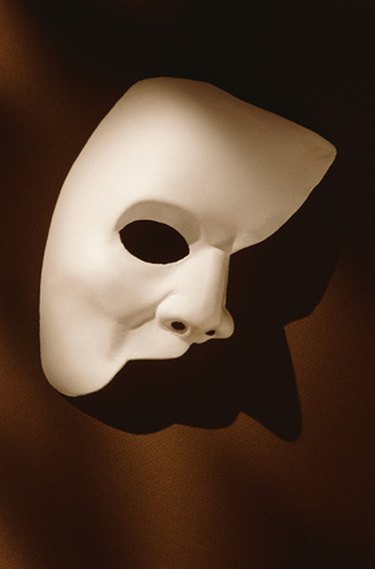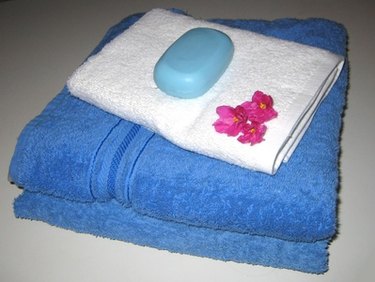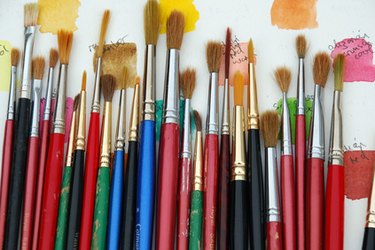Things You'll Need
Hair clips
Petroleum jelly
4-inch plaster of Paris gauze strips
1 cup powdered plaster of Paris
Bowl
Spoons
1 straw
Ball or inflated balloon
Soap
Towel
Tempera paint
Paint brushes

The making of face molds, or "life masks," for ceremonial use, religious rituals and art has been a common practice in many cultures, both ancient and modern. In ancient Egypt, face molds were created for the dead and placed over the face at the time of burial to make the person recognizable in the afterlife. Creating face molds is a good hands-on project to add to history or art lessons and makes a fun at-home craft. Both adults and children can enjoy participating in this project.
Step 1
Clip the hair up and off the face using hair clips. This prevents the hair from getting stuck in the plaster of Paris mixture as it dries. Smooth petroleum jelly onto the skin near the hairline, over the eyebrows and other facial hair and along the jawline to make it easier to remove the face mold once it dries.
Video of the Day
Step 2
Stir 1 1/2 cups warm water and 1 cup powdered plaster of Paris together with a spoon. Dip a pre-cut gauze strip, already impregnated with plaster of Paris, into the solution. Hold the strip over the bowl so the excess plaster of Paris solution can drip into the bowl.
Step 3
Lay one strip at a time along the outer edge of the person's face. Run your fingers along the strips to smooth and blend the edges of the strips together.
Step 4
Place a single layer of plaster of Paris gauze strips over the entire face and leave breathing holes at the nostril area, or you can insert cut-off short straws into the nostrils of the recipient. Allow your fingers to follow and smooth over the contours of the eyebrows, eyes, nose, lips and cheekbones so the person's facial features are discernible. Apply a second layer of gauze strips to the face to add strength to the face mold.
Step 5
Keep the face mold in place for 15 minutes so the plaster of Paris can begin to harden and dry. Have the face mold recipient move their jaw from side to side and open and close their mouth, gently, to loosen the face mold. Carefully lift the mold from the face, taking care not to squeeze or pull as the mold still needs a lot more drying time.
Step 6
Set the face mold over an inflated balloon approximately the same size as a human head. The balloon helps the face mold hold it's shape while drying for the next 24 hours.
Step 7

Use soap and water to remove the residue from the plaster of Paris and petroleum jelly that remains on the recipient's face. Pat dry with a clean towel.
Step 8

Paint life-like details onto the face mold with tempera paints and paint brushes. Leave the painted features to dry overnight.
Tip
Have the face mold recipient sit in a reclining chair, if possible, to make them more comfortable during the mold-making process.
Lay a sheet or plastic drop cloth on the floor to make cleaning up easier.
Warning
Handle the face mold with care. Even after drying completely, the face mold can be crushed or broken if mishandled.
Video of the Day